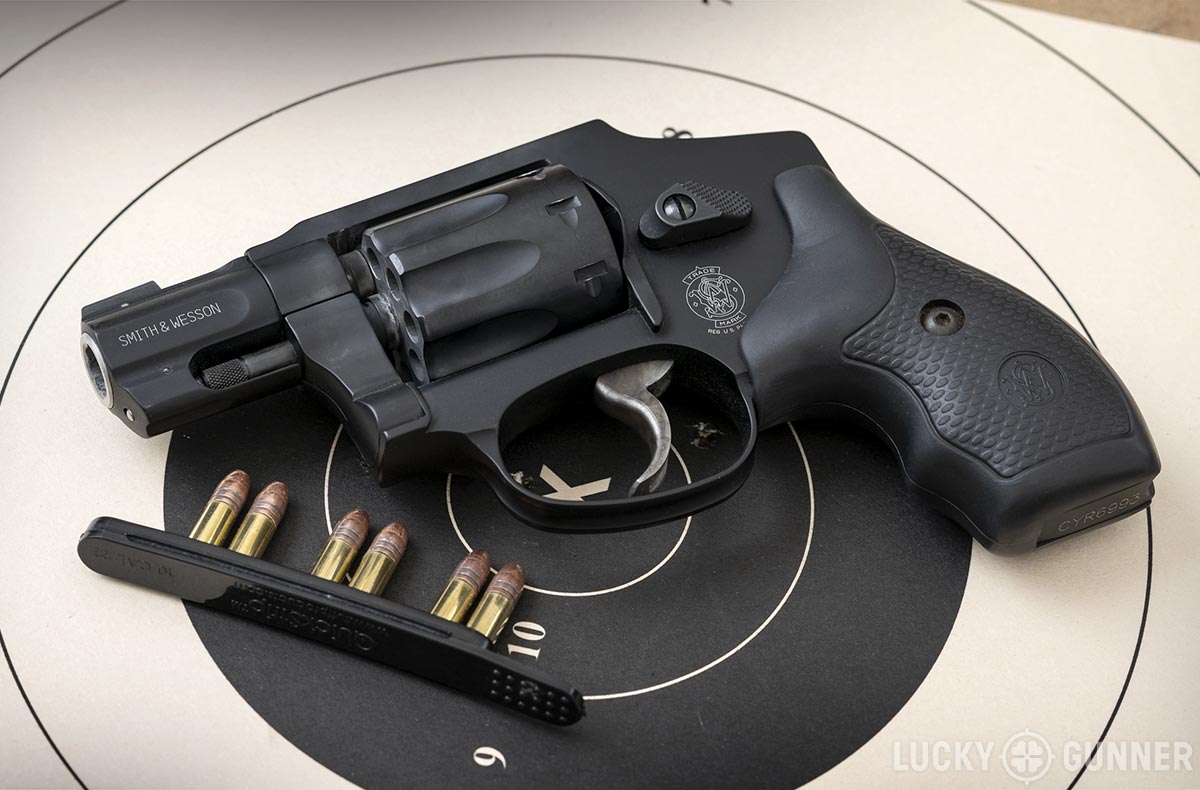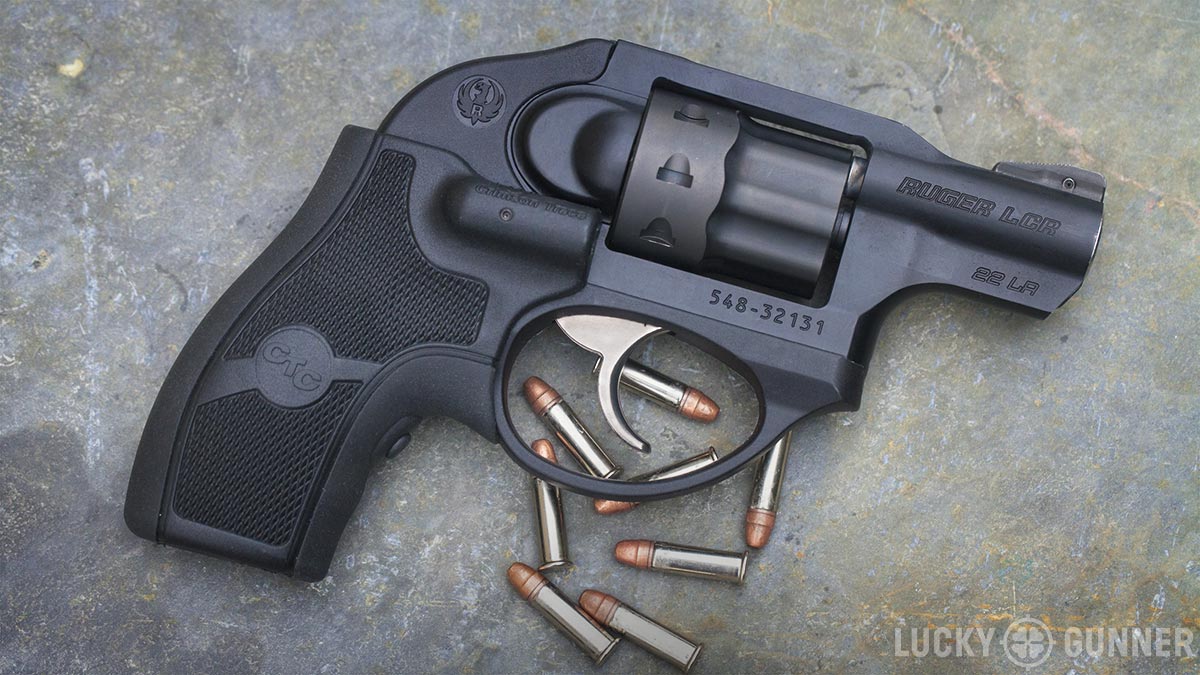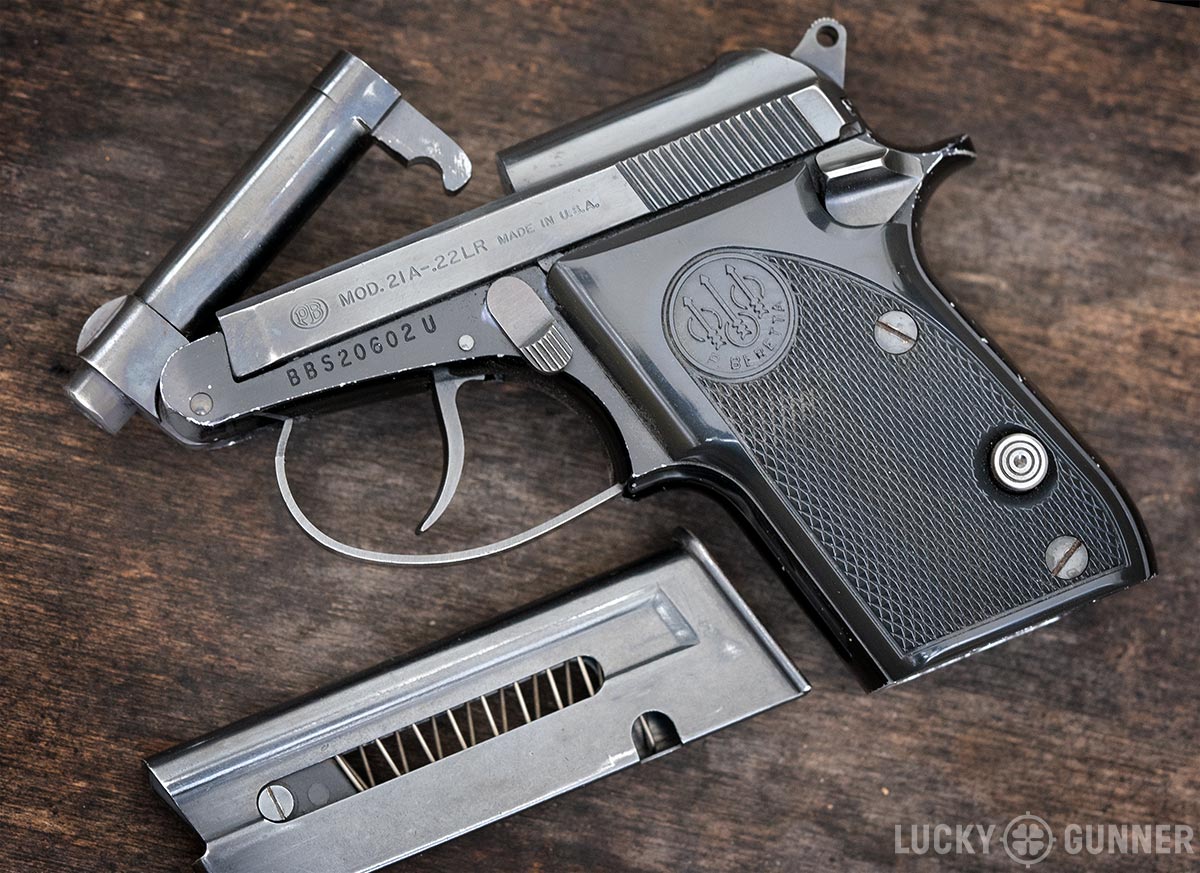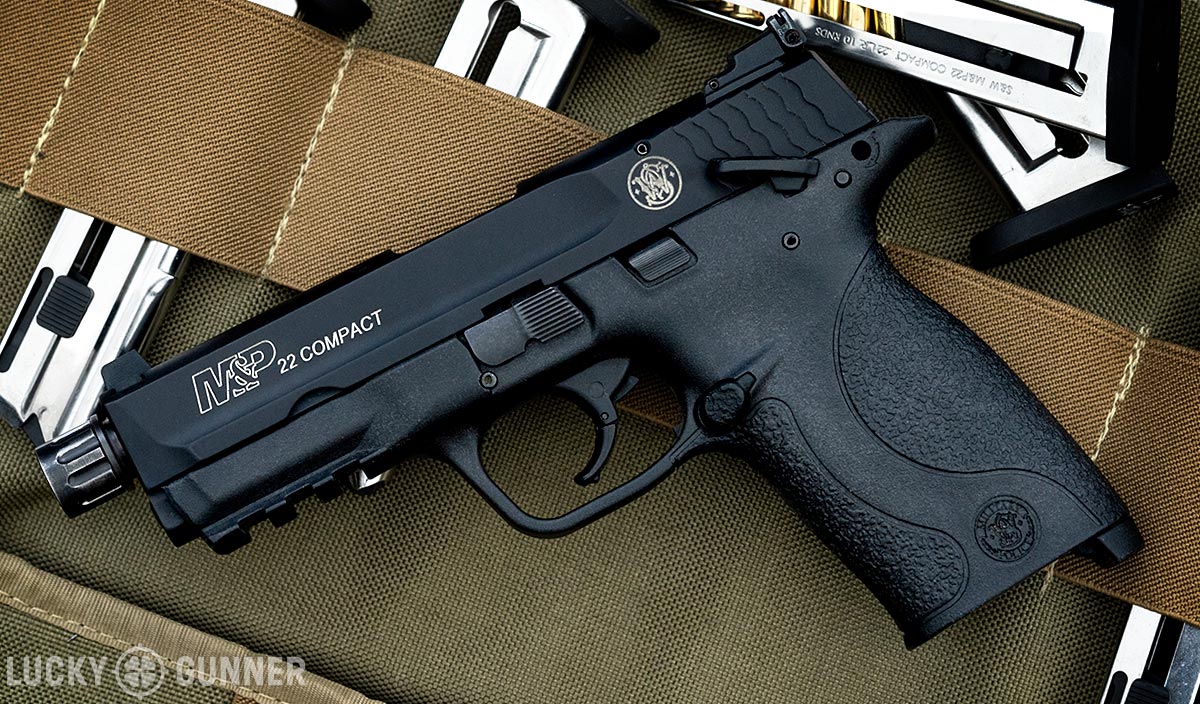Is a .22 LR pistol a good choice for concealed carry? Most of the time, probably not. But in some cases, a .22 you can shoot well and can afford to feed sure beats the alternatives. In Part 7 of our Pocket Pistol Series, I’m making a few specific recommendations for small .22 LR pistols and revolvers for self-defense (and a few you might want to avoid). The focus is on the best among the smallest and lightest .22s available, but I’ve also covered some models from the compact category.
Watch the video below for all the details, or just scroll on down and read the full transcript.
In parts 4 and 5 of our pocket pistol series I talked about the pros and cons of relying on the humble .22 LR for self defense. This cartridge has below average ballistic performance and failures to feed and fire are a lot more common than with centerfire ammo. But .22 LR ammo also offers the unique advantages of extremely low recoil and low cost. For some people, that means they’re a lot more likely to practice, building both skill and confidence, if their concealed carry pistol is a .22.
Because reliability issues with .22s are a very real concern, choosing a carry gun carefully is even more important with this caliber than normal. I’m going to offer a couple of recommendations based on my experience and since this is part of our pocket pistol series, I’ll start with the smallest handguns and then I’ll talk about a few slightly larger .22s at the end.
The Best 22 LR Double Action Snub Nose Revolvers
If you’re going to carry a small .22, a snub nose double action revolver is probably the way to go because it’s going to let you avoid most of those reliability issues. They’re not perfect, especially if you don’t keep them clean, but most of the time, the worst you’ll run into is the occasional light primer strike. In that case, you just press the trigger again and keep shooting.
There are two lightweight .22 LR snub nose models I can recommend: the Smith & Wesson 43 C and the Ruger LCR 22. I’ve been playing with the 43 C a lot lately and I have to say: I’m really having a lot of fun with this thing. It only weighs 11.5 ounces empty and 12.3 ounces fully loaded with eight rounds. That’s about the same weight as a loaded .380 Ruger LCP and lighter than just about any other double action revolver I know of.

The 43 C comes standard with the XS white dot front sight and a large U-shaped notch in the top strap for the rear sight. For me, these sights are a major improvement over the traditional J-frame ramp front sight with the square notch rear. I am able to more consistently get a decent flash sight picture for that important first shot out of the holster.
Like most J-frames, the trigger on the 43 C is less than amazing and like most .22 revolvers, it’s heavier than its centerfire counterparts. Even after thoroughly breaking it in, this one is about 12 pounds and not super smooth. But there is a silver lining to that. Shooting a lightweight .22 like this is a great way to learn how to manage a stiff double action trigger. If you can learn to consistently press a 12-pound trigger straight to the rear on a 12-ounce gun without disturbing the sights and steering the muzzle off target, you’ll be able to pick up any .38 or .357 and run the trigger with no problem.
If the heavy trigger is too much of a turn-off, and you don’t mind a revolver that’s a couple of ounces heavier, you might prefer the Ruger LCR 22. The trigger is still a little heavier than the centerfire LCRs, but most people will find it to be a big improvement over the 43 C. The LCR 22 also has an 8-shot cylinder and weighs 15.5 ounces fully loaded, which is about 3 ounces more than the 43 C.
It’s been a while since I fired one of these, but I did review the LCR 22 for our blog a few years ago. Like all of the other LCRs I’ve tried, I was pretty impressed with it and I wouldn’t hesitate to recommend one.

If you want to know more about the basic differences between the Ruger LCR and Smith & Wesson’s J-frames, be sure to check out the comparison video I did on that last week.
Smith & Wesson and Ruger also make .22 magnum versions of these revolvers. I’ll be talking about those and the .22 magnum cartridge in general in the next installment of our pocket pistol series.
The Best Semi-Auto 22 LR Pocket Pistols for Concealed Carry
Okay, let’s talk about semi-automatic .22s for concealed carry. Back in Part 4, I mentioned that there are only two semi-auto .22s in current production that are truly pocket-sized. I wouldn’t call either of them ideal options for personal protection, but the better of the two by far is the Beretta 21A Bobcat.
This pistol has the tip-up barrel like the Beretta 950 I talked about a few weeks ago. This lets you load the chamber without racking the slide. Also like the 950, it has a manual safety, a mag release on the left side of the grip, and miniscule, nearly useless sights. Unlike the 950, it is a double action/single action pistol and, for my hands, at least, it is a much more ergonomic design, mostly because it’s a little bit larger.

The double action trigger on this gun is quite heavy and very long. But the single action is nice, and it has an extremely short reset. Thanks to that and the low recoil, even if I mag dump one of these things as fast as my finger can run the trigger, I can usually still keep it reasonably on target.
This pistol is an older used model, so it’s not necessarily the best sample for judging the reliability of the 21A in general. I’ve had a couple of light primer strikes and feeding failures with it while shooting CCI Mini-Mags and Stingers. This gun does much better with standard velocity .22 ammo, which is what the owner’s manual recommends using.
This little guy is much smaller than a snub nose revolver, but it doesn’t offer any real advantages otherwise. Loaded, it’s about an ounce heavier than the 43 C. The capacity is the same. For the first shot, the trigger is not any better. The sights are much worse. It’s a lot more ammo sensitive. And if you do have to clear a malfunction, getting a good grip on this little slide is no easy feat.
I don’t mean to go off on a revolver versus semi-auto tangent, but I just want to make it clear that there are some serious compromises involved in carrying a semi-auto .22 pocket pistol.
Speaking of compromises, the other choice you have for a .22 pocket pistol is the Taurus PT-22. Some people have also asked me about other small .22 budget pistols that I wouldn’t consider quite small enough to be pocket-sized like the Phoenix Arms HP22 and the Bersa Thunder 22. I realize that some examples of these guns work just fine, but they are budget pistols for a reason and it’s not because the people making them are trying to be altruistic. Carrying a .22 is already a big compromise. Carrying a small semi-auto .22 is an even bigger compromise. Unless you honestly have no other choice, do you really think it’s wise to push your luck even further by trusting your life to a .22 that was designed around being as cheap to produce as humanly possible?
The Best Compact Semi-Auto .22 LR Pistols
If I was limited to carrying a compact 22, but it didn’t have to be as small as a pocket gun, I would go with the Smith & Wesson M&P 22 Compact. I picked one up when they first came out a few years ago and I’ve put thousands of rounds through it since with no problems to speak of. It’s fed every kind of ammo I’ve put through it.
On top of that, it’s got a nice single-action style trigger and a really well-designed manual safety. The factory sights are decent and there are a couple of aftermarket options if you want to change them. I can’t guarantee that all of these guns run as well as mine has, but I also haven’t heard many complaints from other M&P .22 Compact owners.

That’s all relative, however, because it still has all the drawbacks that come with any .22 pistol. If a .22 appeals to you more because of the reduced recoil than because of the cheap ammo, there are probably better options for self-defense. For example, the .380 M&P Shield EZ is very similar to the M&P .22 Compact but it’s chambered for a cartridge that’s much better suited for a fighting pistol. I’ll talk about this one a little more later in our series when we cover .380s, but I wanted to go ahead and put in a plug for the .380 Shield. I think it’s a better compromise than a rimfire pistol in a lot of cases.
Thoughts On Other Contenders
There are a few other compact .22s people have asked me about. I don’t want to go into a lot of detail, but I’ll give you my two cents on some of these.
Ruger SR-22: I owned one for a while. It’s not a bad gun, but mine was not nearly as reliable as the M&P Compact. The trigger is not great. What really bugged me is the manual safety. It’s the only frame-mounted safety I’ve ever seen where you have to push up for fire and down for safe.
Walther P22: For a long time, these were notorious for cracking slides and breaking in other fun and interesting ways. Supposedly Walther has revised the design and they’re better now. But Walther’s 22s are not built in the same factory or to the same standard as their centerfire pistols and I would be reluctant to trust one for self-defense.
Walther PPK/S .22 LR: The current production models are a newer design than the P22 and so far, they do not seem to have developed as bad a reputation. I still wouldn’t be too excited about carrying one.
Sig P938 .22 LR: No one actually asked me about this one, but I wanted to mention it anyway. The P938 is Sig’s micro 1911-style 9mm. A few years ago they started making a .22 version with a longer 4-inch barrel and target sights. I got to try one of those out for a few weeks and it was pretty cool. But the real interesting thing is that on and off, Sig has also offered a 3-inch version of the .22 model with night sights. That means it’s the same size as the 9mm P938 and should fit the same holsters. As far as I’m aware, the only magazines they have for the .22 are the extended 10-round mags. So it won’t be quite as concealable as the 9mm version, but it’s still among the smallest .22s being made right now.
NAA Mini-Revolvers: There are several versions of these little 5-shot single action only revolvers in .22 LR and .22 Magnum. I’m not going to say it has no practical value, but based on what I’ve seen so far, I think I’d rather be armed with a can of pepper spray and a sharp stick. But enough people have asked me about these that I’m going to devote a whole video reviewing this one, so be on the lookout for that.
In the meantime, you should probably do your Christmas shopping if you haven’t already. Maybe that special someone in your life would really love… a giant case of ammo. And it’s almost Christmas so you’ll probably need to get that ammo with lightning fast shipping. Well, that’s what you’ll get if you order it from us at LuckyGunner.com.


